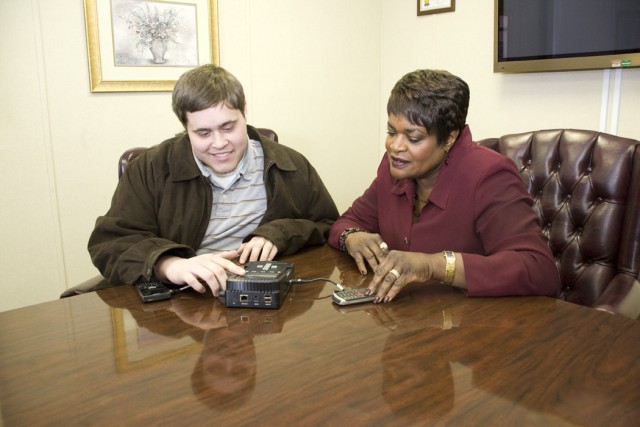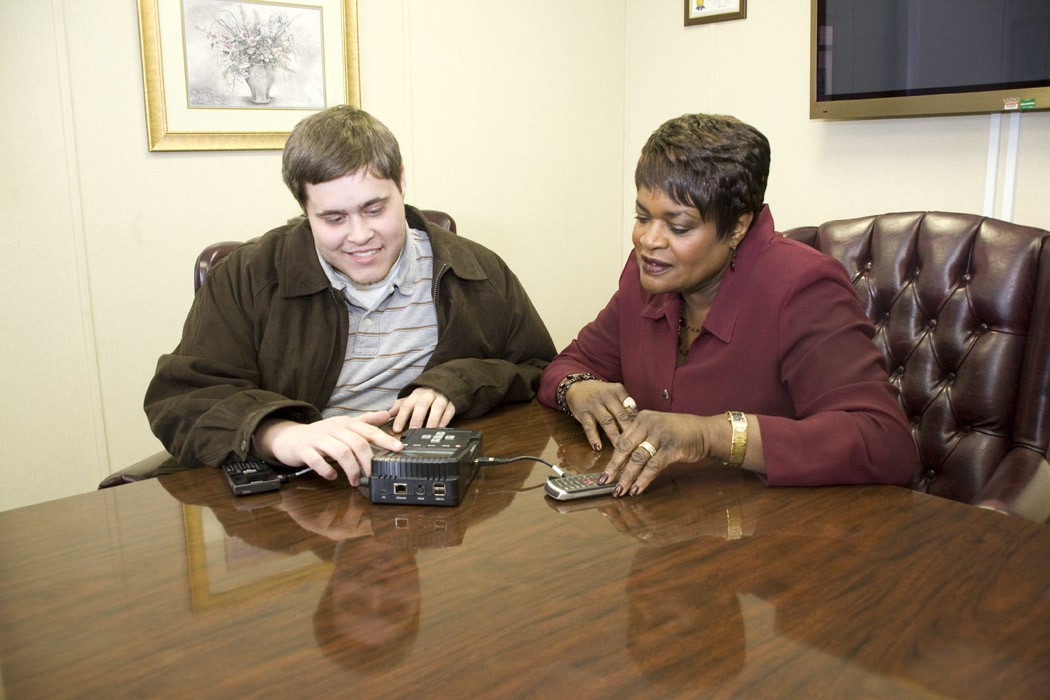ANNISTON ARMY DEPOT, Ala. - A new universal memory exchange device in the Directorate of Information Management, purchased in November 2009, is making the process of transferring contacts and data from an old cell phone to a new one easier than ever.
Stephen Jones, the information technology specialist with DOIM responsible for cell phones and Blackberries, saw the need for the memory exchange device after working with several people who were struggling to shift contacts to their new depot-issued phones.
Several years ago, when the depot issued far fewer phones, DOIM employees were able to assist their customers with the contact transfer. Now, with more than 300 depot-issued cell phones, DOIM employees can no longer provide that help, due to the time involved.
"DOIM was able to transfer contact information from one cell phone to another in the past, but workload and an increased volume of cell phones, made it impossible to continue without the memory device that Mr. Jones located," said Alberta Freeman, DOIM director.
Prior to this device, Jones referred employees to local cell phone retailers, where they were charged for the data transfer, but many resorted to moving the contacts themselves.
Vic Sanders, process improvement specialist for the Enterprise Excellence Division, encountered this problem early in 2009, when he replaced the depot-issued phone he had used for more than two years with a newer model.
"When I changed from my first depot-issued phone to the second, there was not a memory exchange device, so, on my own, I had to transfer all of my contact information manually - every office number, cell number and e-mail address. This took several hours of work time that could have been spent conducting other business," said Sanders.
The new memory exchanger arrived at DOIM just in time to help Sanders with his third phone, which he received because of antenna problems. This time, however, the machine transferred his contacts.
"It took less than two minutes to download and load all of my information to my new phone," he said.
Jones said most of the time required to use the device is spent finding the appropriate cord to use for the data transfer.
"It came with about 100 cables for almost any kind of phone you can imagine," he said.
The device has been used to date mostly on Verizon phones, which have no subscriber identity module card, more commonly called a SIM card, but Jones said the device will work with nearly any brand or carrier.


Social Sharing